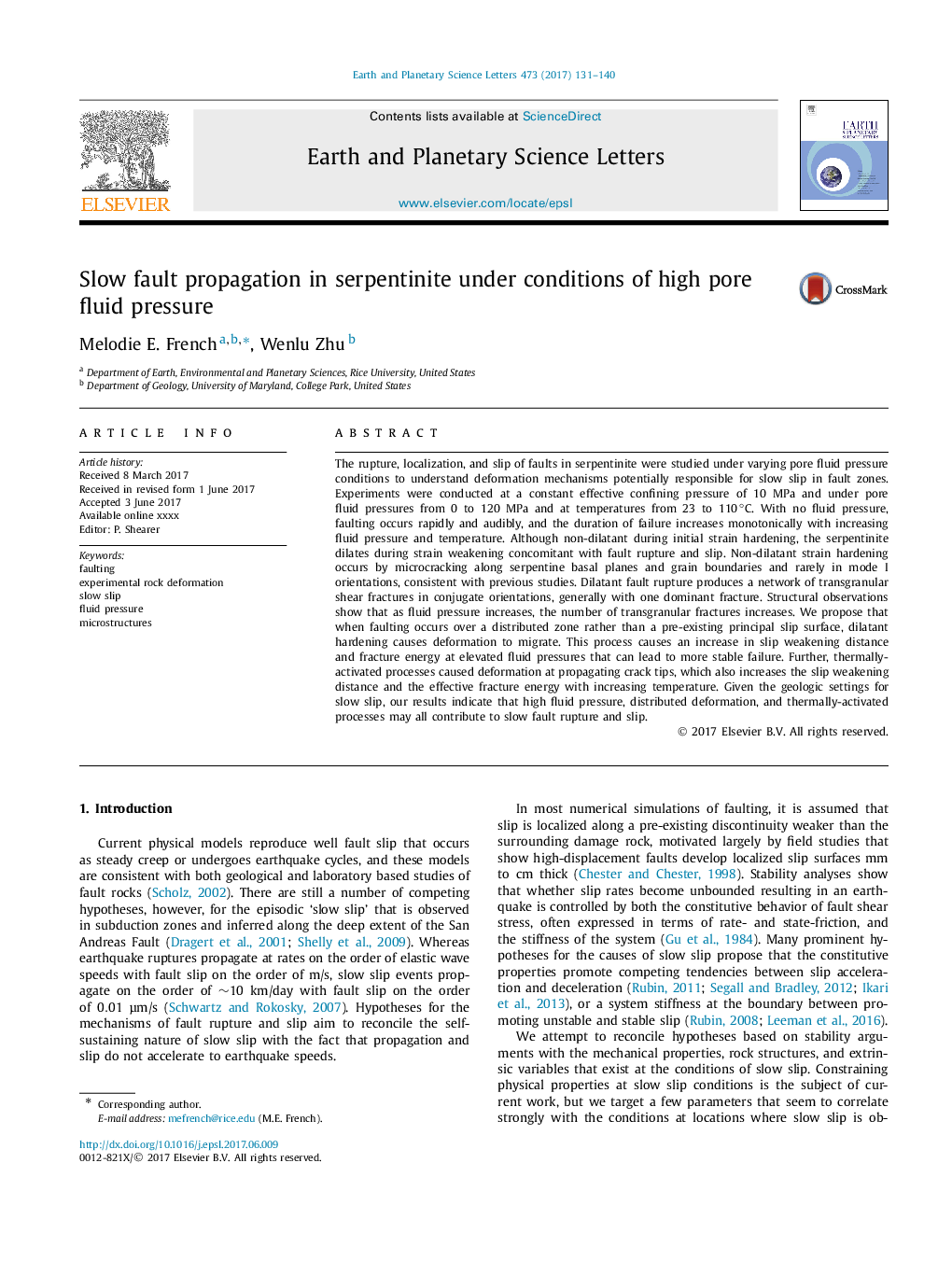| کد مقاله | کد نشریه | سال انتشار | مقاله انگلیسی | نسخه تمام متن |
|---|---|---|---|---|
| 5779692 | 1634683 | 2017 | 10 صفحه PDF | دانلود رایگان |
عنوان انگلیسی مقاله ISI
Slow fault propagation in serpentinite under conditions of high pore fluid pressure
ترجمه فارسی عنوان
انتشار گسل آهسته در سرپانتینیت تحت شرایط فشار بالا مایع منفذ
دانلود مقاله + سفارش ترجمه
دانلود مقاله ISI انگلیسی
رایگان برای ایرانیان
کلمات کلیدی
گنگ تغییر شکل شکل سنگی تجربی، لغزش آهسته، فشار مایع، ریزساختارها،
موضوعات مرتبط
مهندسی و علوم پایه
علوم زمین و سیارات
علوم زمین و سیاره ای (عمومی)
چکیده انگلیسی
The rupture, localization, and slip of faults in serpentinite were studied under varying pore fluid pressure conditions to understand deformation mechanisms potentially responsible for slow slip in fault zones. Experiments were conducted at a constant effective confining pressure of 10 MPa and under pore fluid pressures from 0 to 120 MPa and at temperatures from 23 to 110â°C. With no fluid pressure, faulting occurs rapidly and audibly, and the duration of failure increases monotonically with increasing fluid pressure and temperature. Although non-dilatant during initial strain hardening, the serpentinite dilates during strain weakening concomitant with fault rupture and slip. Non-dilatant strain hardening occurs by microcracking along serpentine basal planes and grain boundaries and rarely in mode I orientations, consistent with previous studies. Dilatant fault rupture produces a network of transgranular shear fractures in conjugate orientations, generally with one dominant fracture. Structural observations show that as fluid pressure increases, the number of transgranular fractures increases. We propose that when faulting occurs over a distributed zone rather than a pre-existing principal slip surface, dilatant hardening causes deformation to migrate. This process causes an increase in slip weakening distance and fracture energy at elevated fluid pressures that can lead to more stable failure. Further, thermally-activated processes caused deformation at propagating crack tips, which also increases the slip weakening distance and the effective fracture energy with increasing temperature. Given the geologic settings for slow slip, our results indicate that high fluid pressure, distributed deformation, and thermally-activated processes may all contribute to slow fault rupture and slip.
ناشر
Database: Elsevier - ScienceDirect (ساینس دایرکت)
Journal: Earth and Planetary Science Letters - Volume 473, 1 September 2017, Pages 131-140
Journal: Earth and Planetary Science Letters - Volume 473, 1 September 2017, Pages 131-140
نویسندگان
Melodie E. French, Wenlu Zhu,
